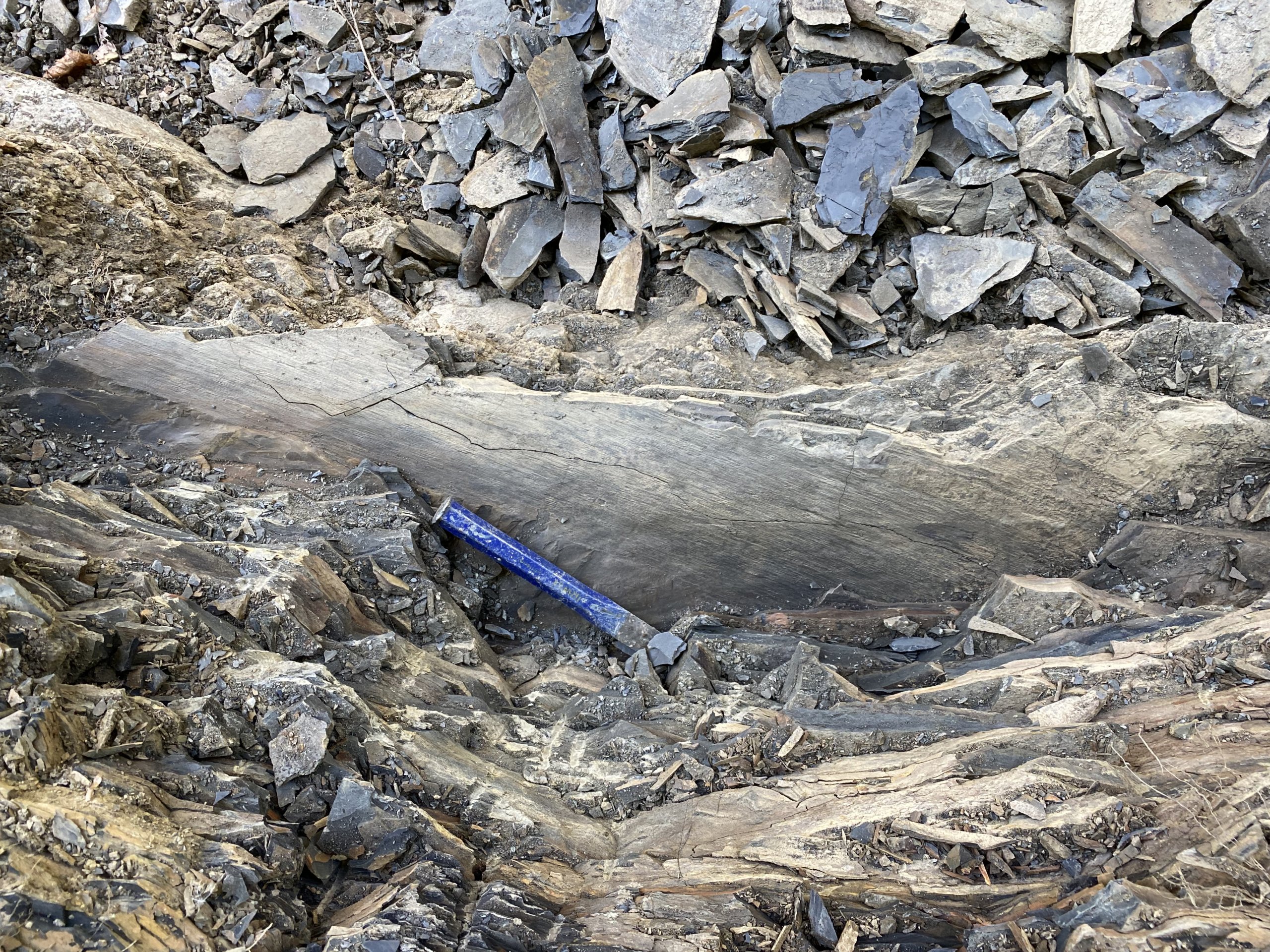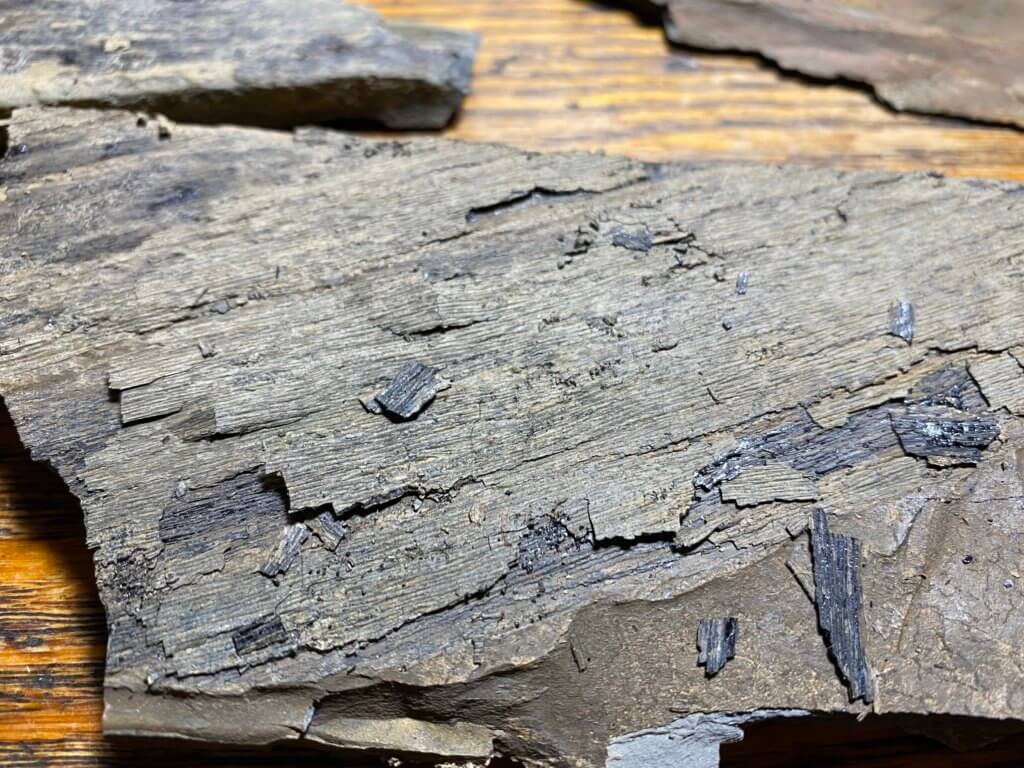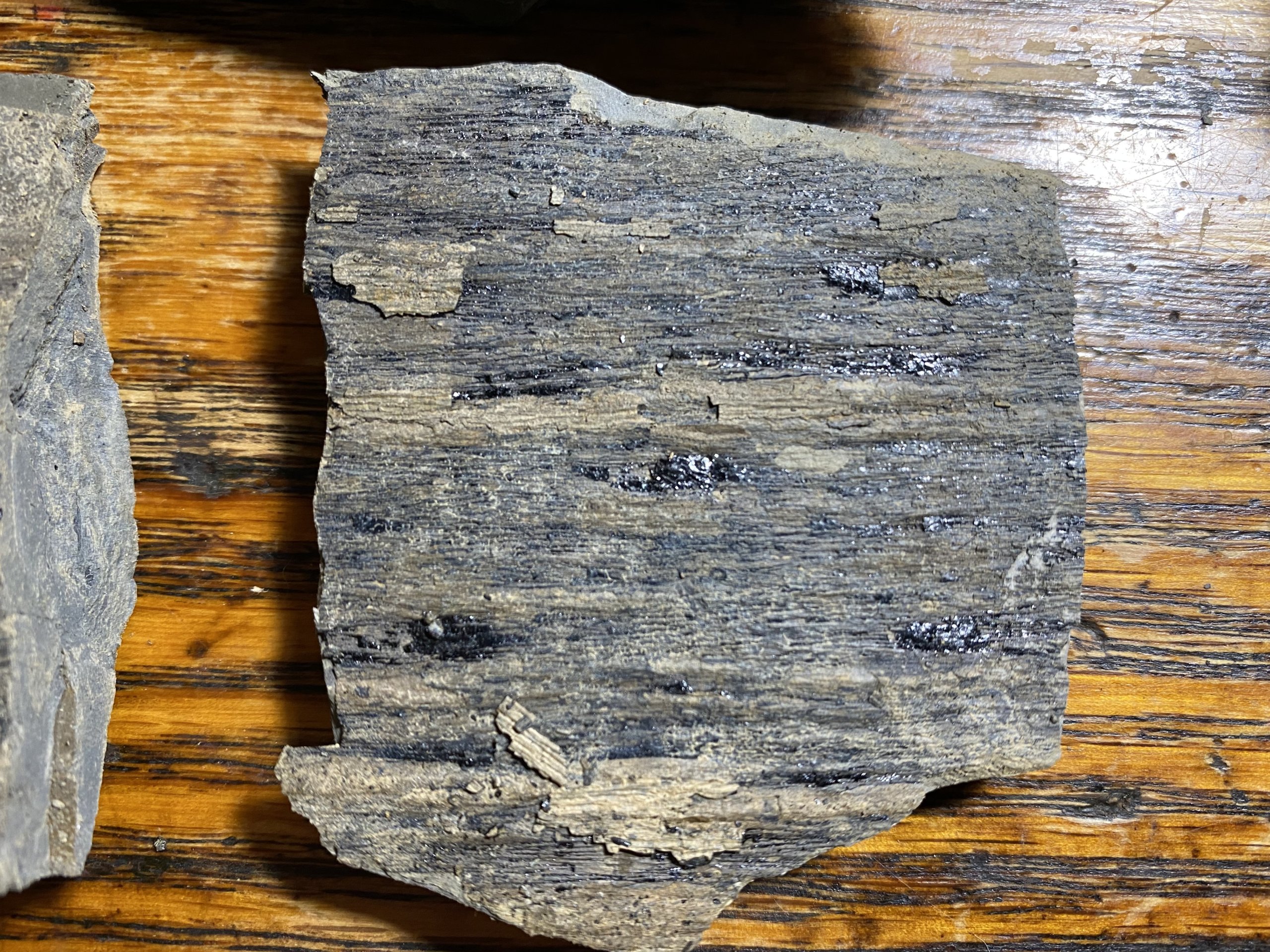Cordaites and Calamites are two familiar plants in the Late Pennsylvanian fossil fauna. The two are similar as fossils, presenting as long horizontal grooves in rocks. Cordaites differs from Calamites as the latter has a termination of the groves with occasional perpendicular grooves coming from the presence of nodes.
I spend a considerable percentage of my fossil field time finding and breaking apart limestone from the Brush Creek limestone and the Pine Creek limestone. However, there are zones with different fauna in each location. In the Brush Creek, there are noticeable ferns and other larger plants lower in the strata. For the Pine Creek location, I find plants higher up above the limestone.
I have a larger collection of plants from the Brush Creek, but arguably more interesting specimens from the Pine Creek. In September of 2021, I was able to find a great example of Cordaites from both horizons and found this to be a good opportunity in which to showcase them.
A Large Specimen of Cordaites from above the Pine Creek limestone
This specimen was too good to leave behind. While it is very large, I was able to bring the rock home and cut the matrix off of the sides to make it easier to store. There is excellent preservation of a junction at the base of the specimen. This is likely where the plant split off into two or more roots. The scale in the photo is a 150 mm ruler.

Specimen Below the Brush Creek Limestone
This specimen was found in a layer of fissile shale. The shale terminates into a red-colored mudstone just an inch lower. Whichever geologic process that laid down the layer that contained the specimen had seemingly changed composition. Plants are common in the layer with ferns abundant. The specimen of Cordaites was revealed as a section that kept going past the portion revealed. I was able to remove many of the rocks above the specimen and carefully lift several pieces of shale. I was able to uncover a long length in place and removed a half dozen pieces to bring home.
This find was interesting because, beyond the mold on two sides of the rock, each side had loose pieces of fossilized plant material flaking off of them. There are dark black spots throughout, indicating pieces that were denser remains of the carbon plant material, sort of like coal.



More Reading about Cordaites
- Sam Noble Museum – Fossil Cordaites

